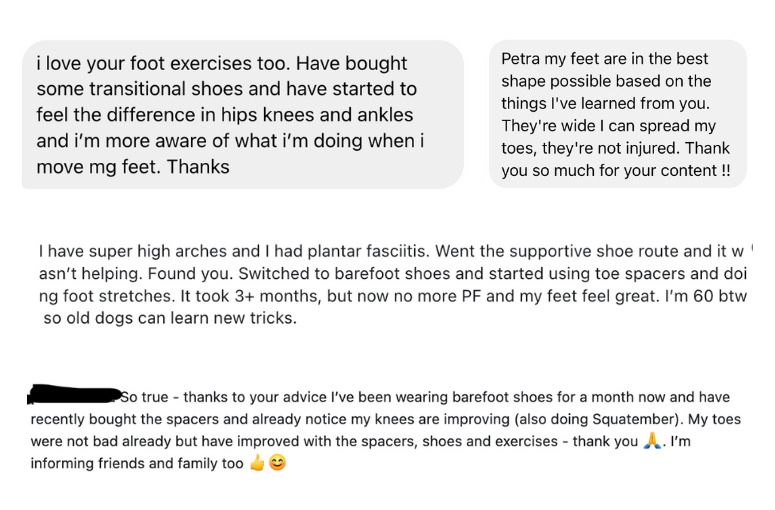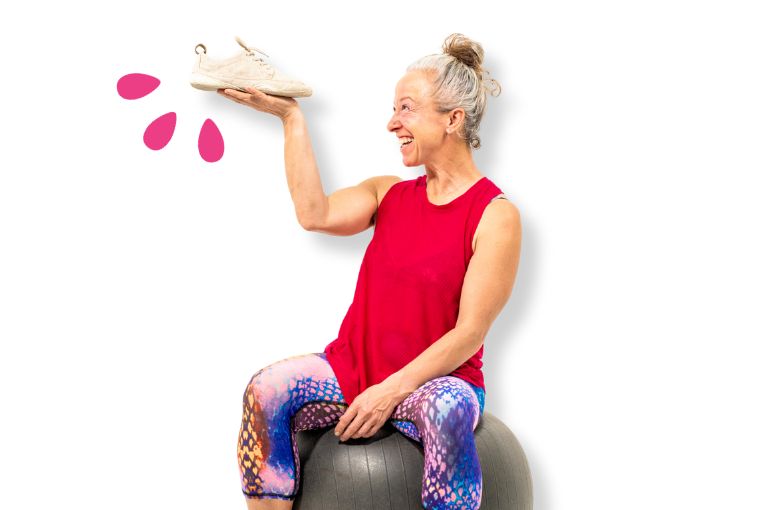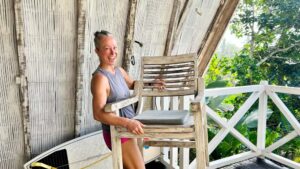Our feet are the foundation of our body, yet most of us rarely give them the attention they deserve. But the truth is, if you want a body that moves well and feels great, you need to start from the ground up – beginning with your feet and the shoes you wear.
When it comes to foot health, our shoes play a bigger role than most of us realize. Conventional footwear is typically harmful for our foot health (even the brands designed for comfort and support). Footwear design is really more about fashion than function, which means that conventional shoes mess up how our feet work. Over time, this leads to weak, stiff feet and even pain & issues like bunions & plantar fasciitis.
Enter minimal shoes (often called barefoot shoes) – a game-changer for anyone looking to improve foot strength, mobility, and overall health.
But what exactly are minimal shoes, and why should you wear them?
In this post, I’ll break down the problems with conventional shoes, how minimal shoes support natural foot function, the key features to look for in a minimal shoe and how to get started with better footwear
Let’s dive in!

What’s Wrong With Conventional Shoes?
Sadly, most conventional shoes aren’t designed with foot health in mind and are really terrible for our feet.
Conventional shoes prioritize fashion, with common design features like raised heels, narrow toe boxes and rigid soles. All of these features literally reshape our feet and interfere with our natural movement patterns. Over time, we develop weak, stiff and un-functional feet. In turn, our sad feet have a big impact on how we walk & move and often experience foot pain as we get older.
Even supposedly healthy footwear, designed for comfort and support, will often have narrow toe boxes that squash our toe bones and raised heels which prevent us from standing and walking well. The thick, cushioned soles may feel great but over time they make our feet stiff and weak.
And maybe the worst part is that foot problems rarely stay at our feet. Feet that don’t work well can be a major reason for pain in our knees, hips, pelvic floor, spine, neck & shoulders.
Want more info? Check out this video for details on exactly how conventional shoes damage our feet, and what to look for instead.
Why Are Minimal Shoes Better For Your Feet?
Thankfully, there’s also good news – most of us can make our feet stronger and healthier by simply switching to different footwear.
Minimal shoes (also known as barefoot-style shoes) are designed to work with your feet, not against them. They are lightweight and allow your feet to move, flex and function naturally, leading to benefits like:
✅ Improved foot strength – simply switching to barefoot style footwear has been shown to strengthen feet as much as a foot exercise program!
✅ Better balance & mobility – giving your toes room to spread and your feet an opportunity to engage with the ground improves stability & coordination.
✅ A more natural gait – minimal shoes encourage proper foot mechanics like supination & pronation, reducing the risk of foot & ankle injuries.
While there are many benefits to wearing minimal footwear, it’s crucial that you support your transition with foot strengthening exercises. The ones in my free Free Your Feet bootcamp are designed to do exactly that!
Build strong, healthy, pain-free feet - for a lifetime! (for free!)
What Are The Key Features Of Minimal Style Shoes?
There are more and more foot-friendly minimal shoe brands out there, but what does that really mean? Here are the five key features that make a barefoot-style shoe:
1️⃣ Zero drop – no lift in the heel. Lifted heels overload our forefeet and cause wonky compensations in our entire bodies. A flat sole ensures even weight distribution & prevents these unnatural compensations from happening.
2️⃣ Wide toe box – human feet should be widest at the toes, so we need shoes that allow our toes to spread naturally. This is essential to functional arches because of how our foot muscles are set up. (If you have squished toes, toe spacers can help! Check out my top recommendations here.)
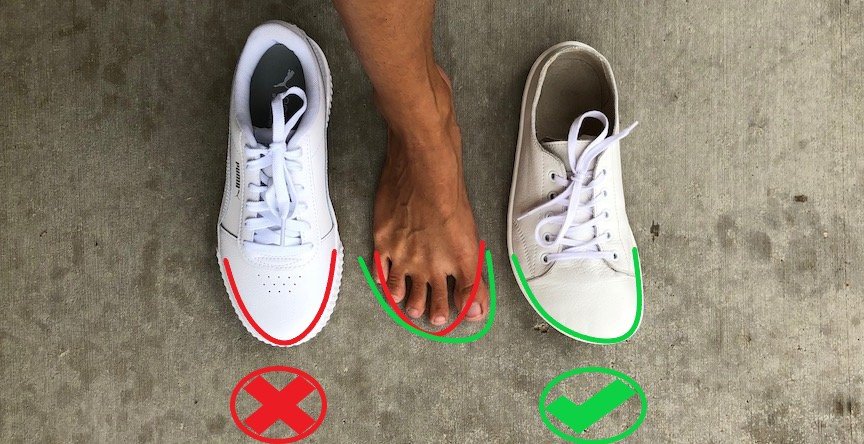
3️⃣ Thin, flexible soles – feeling the ground improves proprioception (your body’s awareness of movement), helping our brains know how to walk better. Being able to feel the ground also helps our balance. And because our feet can move more, flexible soles help build foot strength & mobility and allow our feet to push off from bent toes (essential for correct walking).
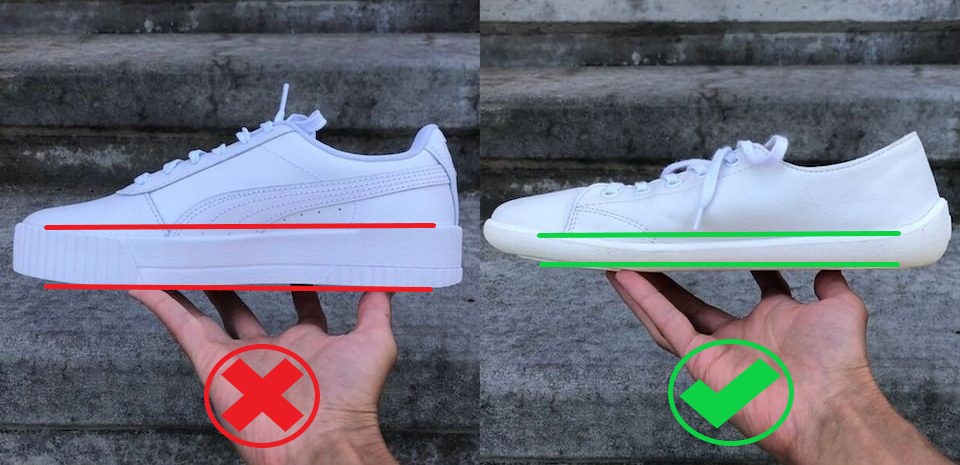
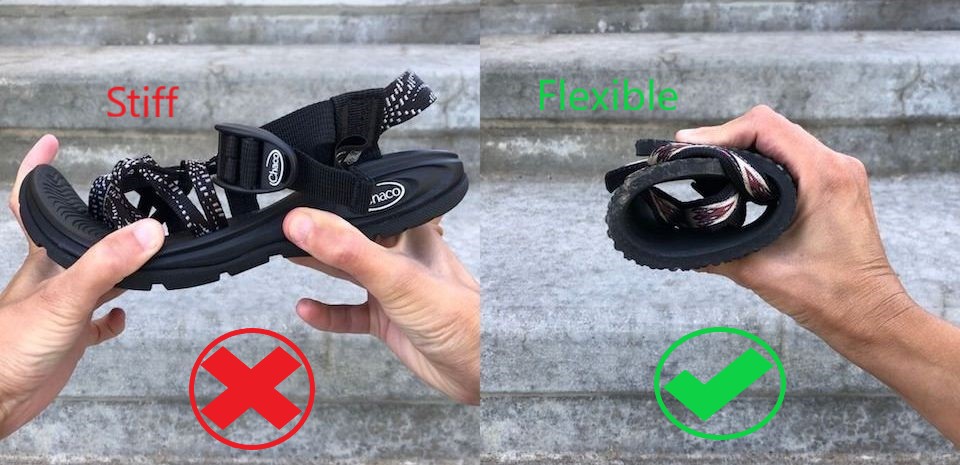
4️⃣ No toe spring – conventional shoes have an upward curve at the toes, which prevents us from tripping over the thick soles, but locks our toes into an unnatural position. Over time, this weakens foot muscles and can lead to foot problems like hammertoes and plantar fasciitis.
5️⃣ Securely attached – shoes that aren’t attached to the feet make our toes grip in an unnatural and unfunctional way, contributing to long-term problems. (Flip-flops and slip-ons, for example.)
While some conventional shoes may incorporate a few of these features (such as Birkenstocks), a true minimal shoe includes all of them.
But I Need Arch Support!
And no, most people don’t need arch support – even if you have flat feet or super high, rigid arches.
When our feet are strong and mobile, we create our own arches – that’s literally the way our feet are structured!
And arches aren’t really static structures – they’re more of a movement pattern. Arch support just makes our feet weak over the long run.
Minimal shoes help restore your arches (whether your feet are flat or high arched or just regular):
1️⃣ The wide toe boxes give your toes room to spread, creating more strength and leverage for the abductor hallucis longus muscle that helps create the arch
2️⃣ The flexible soles help strengthen your foot muscles, including your arch muscles
3️⃣ The flexible soles help mobilize your midfoot so your foot can travel through pronation (flattening) and supination (twisting and becoming rigid) which is an essential movement pattern for efficient gait (try this exercise to improve your pronation & supination pattern)
If you feel like your arches need special care, then it’s especially important to support your transition with foot exercises so you get the best results. As well as the pronation & supination exercise, my free Free Your Feet program will be a big help in restoring your arches – grab it right here!

What’s A Transitional Shoe?
Although a minimal shoe is the gold standard when it comes to helping your feet move naturally, you might be worried that switching from your current footwear to a barefoot shoe could be too much for your feet.
And that’s a good thing to be concerned about – because it can be a big change for your body.
That’s why it’s also good to know about ‘transitional’ footwear – shoes that intentionally combine some minimal shoe features with thicker, more cushioned soles.
Transitional shoes are typically more comfortable to wear than minimal shoes and provide some extra protection for your feet during your transition. In fact, I still use a transitional style hiking boot because my feet prefer having thicker soles for long walks on rough ground.
Pro tip – if you’re concerned about wearing your new minimal shoes on pavement, transitional shoes are your secret weapon! You can switch back and forth between more minimal barefoot shoes and your transitional pair – just pull them out any time you’re planning a long city walk or if your feet want a bit of extra cush. Minimal shoes can work great on hard surfaces once you’re used to them, but it’s best to give yourself lots of time to adapt!
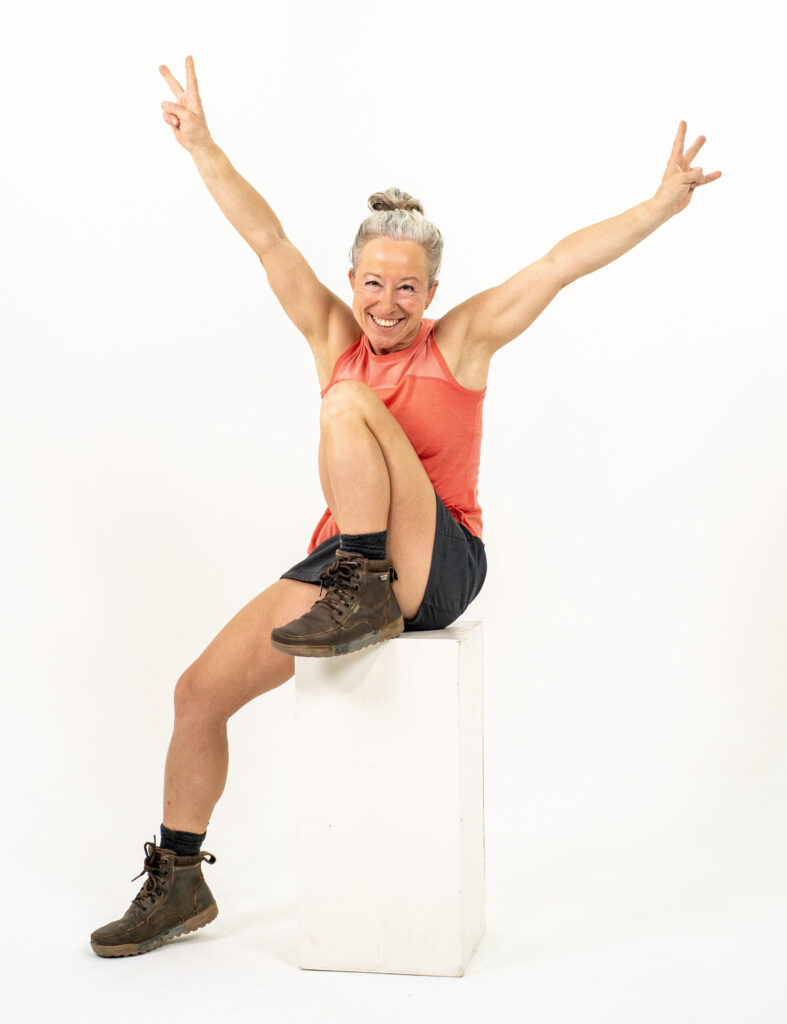
Next Steps
Although barefoot style/minimal footwear can be much healthier for our feet in the long run, it’s not always easy to transition (even using transitional shoes). Most of us have spent our entire lives in conventional shoes. This means our foot muscles are weak & underdeveloped and can get injured if we transition too fast.
Think of it like weight training – if you’re never lifted weights before, you wouldn’t start by bench pressing 300 lbs on day one. The same logic applies to your feet – jumping into minimal shoes too quickly can overload muscles that are underprepared.
What’s more, I firmly believe that most people can get a lot more benefit from their transition if they do exercises to restore foot alignment and function along the way.
Minimal shoes alone will help your feet get stronger, but you’ll get far more impact (and a lower risk of future injuries) if you take the time to do smart exercises to help your body adapt to your new footwear.
Switching to minimal shoes is a long-term investment in your health and the key to success is a gradual, well-planned transition. So, before you even change your footwear, the first step is to start strengthening your feet.
My free Free Your Feet program is packed with simple exercises to improve your foot function and help prepare your feet so you can start wearing minimal shoes without pain!
Click here to get started right now!
Get rid of foot pain (naturally) and build lifelong foot health, strength & flexibility - for free!
